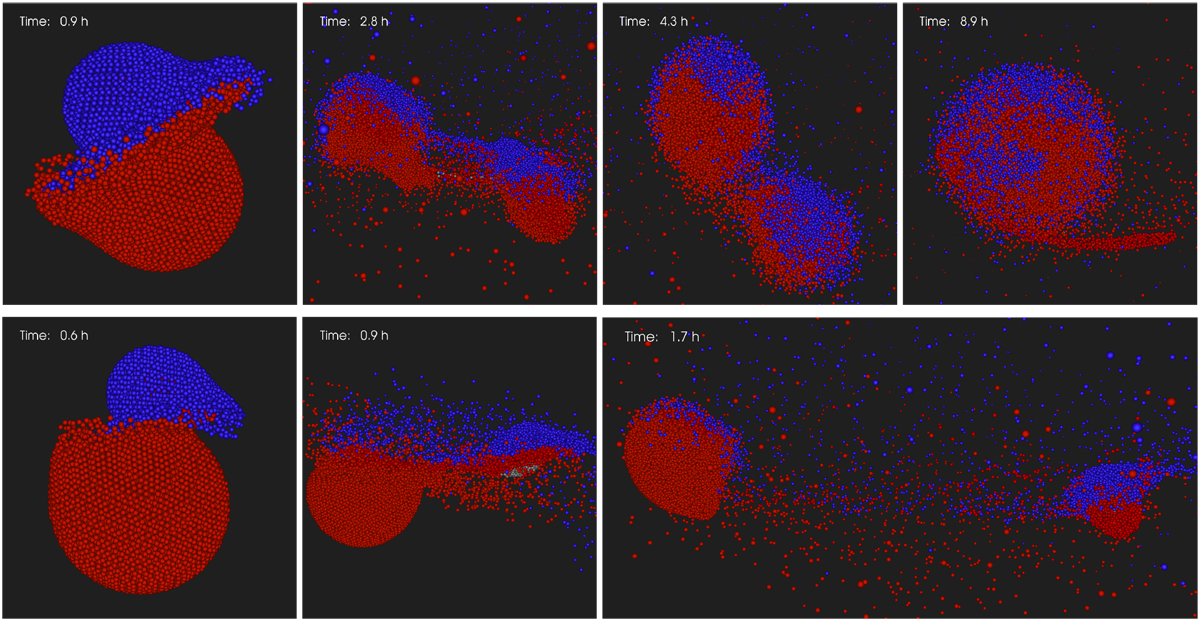Fig. 16

Snapshots of SPH collision simulations of two different scenarios (top and bottom row). The impactor (smaller body, in blue) approaches the target from the left. The color coding shows water on the impactor in blue and silicate material (basalt) in red. (Iron core material is hardly exposed and is light gray.) The target body was actually also simulated with a water shell, but is marked in red too in order to highlight water transfer from a water-rich impactor to a dry target. Top row: accretionary collision (more precisely “graze-and-merge”, where after a brief hit-and-run-like period the bodies fall back and merge), with vimp ∕vesc = 1.2, impact angleα = 28° and impactor-to-target mass ratio γ ~1:2. Bottom row: typical hit-and-run encounter with only relatively little water transfer, where vimp ∕vesc = 1.8, α = 47° and γ ~1:6. The collisionin the top panels is the last (at ~70 Myr) decisive water-delivering event for the planet in Fig. 17, the one in the bottom panels shows the first (at ~30 Myr) of two such decisive collisions for the planet in Fig. 18 (see Sect. 6.3 for details).
Current usage metrics show cumulative count of Article Views (full-text article views including HTML views, PDF and ePub downloads, according to the available data) and Abstracts Views on Vision4Press platform.
Data correspond to usage on the plateform after 2015. The current usage metrics is available 48-96 hours after online publication and is updated daily on week days.
Initial download of the metrics may take a while.


